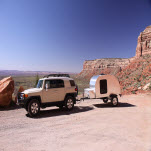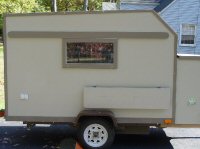Sealing before skinning?
15 posts
• Page 1 of 1
Sealing before skinning?
I'm planing on skinning the trailer with aluminum and I have a question.
I start thinking about sealing with CPES walls, roof and floor. Then I started thinking about just using epoxy. Lately I have been thinking about just using 2 part epoxy paint. Which way would be the best aproach ? The walls roof and floor will be skined with aluminum.
I start thinking about sealing with CPES walls, roof and floor. Then I started thinking about just using epoxy. Lately I have been thinking about just using 2 part epoxy paint. Which way would be the best aproach ? The walls roof and floor will be skined with aluminum.
-

jkidd6339 - Teardrop Master
- Posts: 198
- Images: 1
- Joined: Sat Jan 24, 2009 1:16 am
since you are skinning with aluminum, which will keep out the moisture, it seems like the wood treatment is backup in case there is a leak? In that case I'd go with the stuff that penetrates the most, which I think is the CPES, though I'll lay money out that some didn't use it at all when using the aluminum skins. The bottom gets the black goo... arg.
-

kennyrayandersen - 1000 Club

- Posts: 1750
- Images: 38
- Joined: Sun Apr 29, 2007 10:27 pm
- Location: TX


 Mark (& Cindi)
Mark (& Cindi) 




